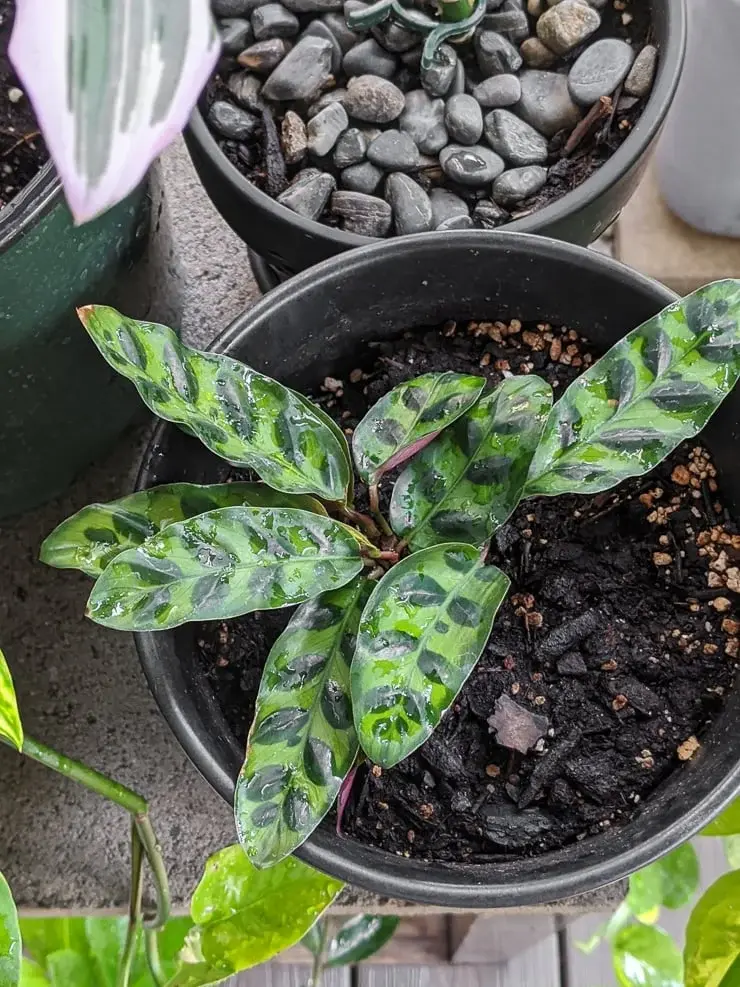
Create Your First Project
Start adding your projects to your portfolio. Click on "Manage Projects" to get started
16 Non-Toxic Plants for Cats & Dogs
Project type
Cats & Dogs safe
Date
December 2024
Location
Canada
Here is a list of 16 beautiful and non-toxic plants that are safe for animals, including cats and dogs. Each plant is known for its pet-friendly nature and ability to thrive indoors. Along with their details, I've included some characteristics to help you choose the best ones for your home.
1. Spider Plant (Chlorophytum comosum)
Toxicity: Non-toxic
Description: Spider plants are known for their arching green leaves with white stripes. They’re easy to care for and can purify the air.
Light: Bright, indirect light
Water: Water when the soil is dry
Pet Considerations: Safe for pets, but some pets may nibble on the leaves.
2. Boston Fern (Nephrolepis exaltata)
Toxicity: Non-toxic
Description: With feathery, bright green fronds, Boston ferns add a lush, tropical feel to your home. They thrive in humid environments and require regular misting.
Light: Indirect, moderate light
Water: Keep the soil moist but not soggy
Pet Considerations: Safe for pets; however, avoid overwatering to prevent mold growth.
3. Areca Palm (Dypsis lutescens)
Toxicity: Non-toxic
Description: The areca palm is a popular indoor palm with feather-like fronds. It grows well in indirect light and is easy to care for.
Light: Bright, indirect light
Water: Water when the top layer of soil is dry
Pet Considerations: Safe for cats and dogs.
4. Calathea (Calathea spp.)
Toxicity: Non-toxic
Description: Known for its striking patterned leaves, the calathea plant adds color and vibrancy to indoor spaces. It’s sensitive to direct sunlight and dry air.
Light: Low to medium indirect light
Water: Keep soil evenly moist
Pet Considerations: Safe for pets and visually attractive for home decor.
5. Parlor Palm (Chamaedorea elegans)
Toxicity: Non-toxic
Description: This palm is known for its low-maintenance care and ability to thrive in low light. It’s a popular choice for homes with limited natural light.
Light: Low to moderate indirect light
Water: Allow the soil to dry out between waterings
Pet Considerations: Safe for pets and adds a touch of greenery to small spaces.
6. Bamboo Palm (Chamaedorea seifrizii)
Toxicity: Non-toxic
Description: With tall, elegant fronds, the bamboo palm can grow in indirect light and is known for purifying indoor air.
Light: Moderate indirect light
Water: Water when the top inch of soil feels dry
Pet Considerations: Completely safe for pets.
7. Prayer Plant (Maranta leuconeura)
Toxicity: Non-toxic
Description: The prayer plant has beautiful, ornamental leaves that fold up in the evening, resembling hands in prayer. It thrives in moderate to low light.
Light: Low to medium indirect light
Water: Keep soil consistently moist
Pet Considerations: Safe for pets.
8. Echeveria (Echeveria spp.)
Toxicity: Non-toxic
Description: These small, rosette-shaped succulents are low-maintenance and ideal for bright, sunny spots.
Light: Bright, indirect light or direct sunlight
Water: Water sparingly; let the soil dry out between waterings
Pet Considerations: Safe for pets, but keep it out of their reach, as some animals may find the leaves tempting.
9. Prayer Plant (Maranta leuconeura)
Toxicity: Non-toxic
Description: This plant has beautiful patterned leaves and is safe for pets. It is known for its unique behavior of folding its leaves up in the evening, mimicking a praying gesture.
Light: Low to moderate indirect light
Water: Keep the soil moist, but avoid overwatering
Pet Considerations: Safe for both cats and dogs.
10. Cast Iron Plant (Aspidistra elatior)
Toxicity: Non-toxic
Description: The cast iron plant is known for its durability and tolerance to low light and irregular watering. Its long, dark green leaves are perfect for darker spaces.
Light: Low to medium indirect light
Water: Allow soil to dry out between waterings
Pet Considerations: Pet-friendly, and very low-maintenance.
11. African Violet (Saintpaulia spp.)
Toxicity: Non-toxic
Description: African violets are compact plants with colorful, velvety flowers that bloom year-round. They do well in bright, indirect light and require regular watering.
Light: Bright, indirect light
Water: Keep soil moist but not soggy
Pet Considerations: Safe for pets and great for small spaces.
12. Friendship Plant (Pilea involucrata)
Toxicity: Non-toxic
Description: This plant has unique, textured leaves with a quilt-like appearance. It thrives indoors with moderate care.
Light: Medium, indirect light
Water: Keep soil moist, but not waterlogged
Pet Considerations: Pet-friendly and low maintenance.
13. Rattlesnake Plant (Calathea lancifolia)
Toxicity: Non-toxic
Description: The rattlesnake plant has beautiful patterned leaves with dark green spots and light green markings. It does well in indoor environments with indirect light.
Light: Indirect, moderate light
Water: Keep the soil consistently moist
Pet Considerations: Non-toxic to pets and safe to have in your home.
14. St. Augustine Grass (Stenotaphrum secundatum)
Toxicity: Non-toxic
Description: Known for its lush green grass, St. Augustine is safe for pets and provides an easy-to-care-for green spot in your home.
Light: Indirect light
Water: Regular watering
Pet Considerations: Safe for both cats and dogs.
15. Lemon Balm (Melissa officinalis)
Toxicity: Non-toxic
Description: This herb has a strong lemon scent and is often used in teas. It’s easy to grow and adds a fresh fragrance to your home.
Light: Bright, indirect light
Water: Water when the soil feels dry
Pet Considerations: Safe for pets, though dogs might be attracted to the scent.
16. Haworthia (Haworthia spp.)
Toxicity: Non-toxic
Description: Haworthia are small succulents that are easy to maintain, thriving in low light and with minimal water needs.
Light: Bright, indirect light
Water: Water sparingly
Pet Considerations: Safe for pets, although the plants’ small size means they can be easily knocked over.


































